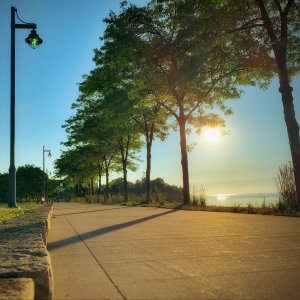
During the NetworkNature semester ‘Nature-based solutions in light of the pandemic’ we have explored how these solutions affect health and well-being. There is increasing research and findings indicating that among the many benefits of natural spaces, are improvements to mental and physical health.
Natural spaces were listed as one of the five keys to healthier cities, by IS Global. How to then introduce nature-based solutions to improve health? It is crucial to create more accessible green spaces in cities. A recent Institute for European Environment Policy (IEEP) report ‘Nature-based solutions and their socio-economic benefits for Europe’s recovery’ found that some groups are lacking access to green spaces, specifically in already deprived areas, and particularly vulnerable groups e.g. people with disabilities and elderly people. Large natural parks are often located in the outskirts of cities, which might be too far for some groups, however a pocket park or a green corridor in the vicinity can make a huge difference for health. Thus urban greening plans should take into account both availability and accessibility of green spaces. Which sometimes is easier said than done as densely populated areas experience high-competition of land use, however with innovative nature-based solutions one can pick the ‘low hanging fruits’ – e.g. installing green elements to existing sites or incorporating them into plans and exploring intermittent use and leasing of derelict areas. The Green City Accord, a movement of European Mayors committed to making cities cleaner and healthier, has included indicators for introduction of nature-based solutions into existing urban infrastructure, which might entail that many European citizens will see a subtle and sustainable green transformation in their cities in the coming years!
![]()
![]()
Image: Health benefits of Green spaces for Adults and Children, IS Global
Further the Urban Greening Plans, outlined in the European Biodiversity Strategy for cities and towns with over 20,000 inhabitants, offers an opportunity for integrating health issues and concerns into urban planning. The Urban Greening Plans adopt an integrated approach towards nature-based solutions, looking at all multitude of benefits that NbS deliver. Several of the benefits affect health directly such as, such as climate resilience (buffering natural disasters and thus, mitigating losses that might trigger mental health issues), climate adaptation (i.e. reduce flooding, heat island effects, etc.), air quality (i.e. filtering air pollutants). Many European cities have their own frameworks similar to Urban Greening Plans, which makes them an excellent tool to streamline and align them with EU- and international level sustainability goals and commitments.
![]()
Image: Benefits of blue spaces to health, IS Global
How to implement these plans on the ground? A co-creation approach often taken in the implementation of NbS is crucial to achieve inclusive results. Co-creation is the active engagement of all relevant stakeholders in the design, planning and implementation these solutions, fostering ownership. Only by working with the end-users can one get a thorough understanding of the issues and needs of target groups. Reaching to a wider group of stakeholders, in the co-creation process, such as health institutions and insurance companies, can help spread practices across sectors. Local governments implementing NbS should foster collaboration across departments, as well as embrace public-private partnerships – and be willing to take a supporting role when necessary instead of a steering one. To this end the HEALTHY CITIES network is designing action plans that bridge urban planning and health. Their new Healthy Cities Assessment tool helps assess urban plans effectiveness in contributing to improving health. Great examples of successful holistic approaches is within the EU-funded proGIreg project implementing nature-based solutions in Europe and China to revitalise post-industrial areas. Turin, one of the projects pioneer cities, saw the municipality channel the funding to the Farfalle in ToUr initiative where the University of Turin, collaborated with doctors from mental health centres to develop a scientific curriculum for patients to start mapping and monitoring pollinators. By involving people with mental health issues, they helped integration back into society, with some participants going on to teach in schools about pollinators. Another great example from proGIreg, is the Croatian capital Zagreb which opened a therapeutic garden during the pandemic, co-designed with local associations working with people with disabilities. The garden is fully accessible and organises activities such as urban gardening for groups.
The new found appreciation and interest in the health benefits of nature, bodes well for a truly green and inclusive recovery from the pandemic.
Top Photo: Aleaddind Hallak, Unsplash
